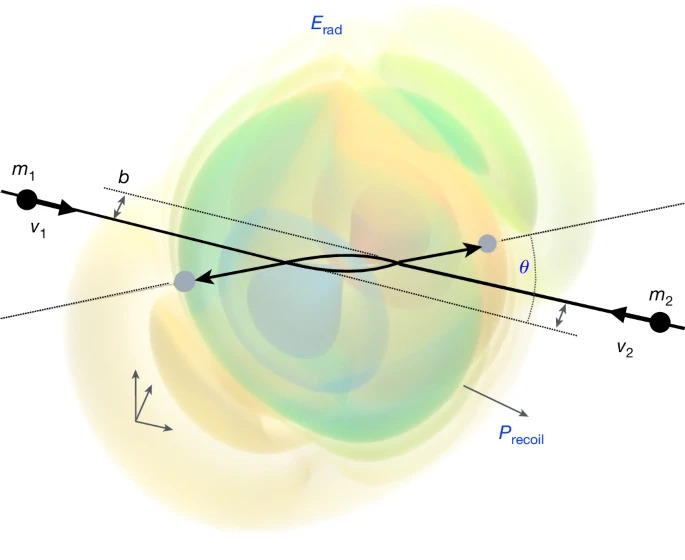THE LATEST
Black hole scattering study raises eyebrows

A recent study from Queen Mary University of London claims to offer insights into black hole scattering and gravitational waves. The research suggests that complex mathematical structures, known as Calabi–Yau manifolds, emerge in high-precision calculations of black hole interactions. While the study has garnered attention, some experts urge caution, questioning the practical implications of these findings.
The researchers employed advanced supercomputing techniques, adapting methods from particle physics to model gravitational interactions between massive celestial bodies. Their calculations, reaching the fifth order in Newton's gravitational coupling, revealed unexpected mathematical patterns. Specifically, functions related to Calabi–Yau manifolds appeared in the solutions for radiated energy during black hole scatterings. These manifolds, often associated with string theory, are intricate, multi-dimensional shapes that have been used to describe the compactified dimensions of the universe.
While the study's mathematical elegance is undeniable, its physical relevance remains uncertain. Dr. Tessa Baker, a cosmologist at Queen Mary University who was not involved in the study, commented, "The appearance of Calabi–Yau structures in these calculations is intriguing, but we must be careful not to overinterpret their significance without empirical evidence."
Critics also point out that the study's reliance on high-order perturbative methods may limit its applicability to real-world astrophysical scenarios. Dr. Alan Thompson, an astrophysicist at the University of Cambridge, noted, "These calculations are performed under idealized conditions that may not accurately reflect the complexities of actual black hole interactions."
Furthermore, the practical detection of gravitational waves resulting from such scattering events poses significant challenges. Current detectors like LIGO and Virgo are primarily tuned to observe waves from binary mergers, not the subtler signals predicted by this study. While future observatories, such as the Laser Interferometer Space Antenna (LISA), aim to broaden detection capabilities, observing these phenomena remains speculative.
In conclusion, while the study presents mathematically sophisticated models that contribute to our theoretical understanding of gravitational interactions, the lack of empirical validation and practical detection methods warrants a cautious interpretation of its findings. As with many theoretical advancements, the true test will lie in their alignment with observational data, which remains to be seen.

